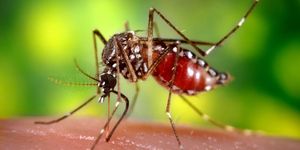A Virus Can Create a Sophisticated Transport System in Bacteria
Bacteria are turning out to have the potential for greater sophistication than once thought. Scientists have investigated the inner workings of bacteria infected with a virus and found structures that act as a kind of treadmill that can move cargo within the bacterial cell. The study, by scientists in the labs of Professor Joe Pogliano and Assistant Professor Elizabeth Villa at the University of California San Diego (UCSD), has been reported in Cell.
"It's not that bacteria are boring, but previously we did not have a very good ability to look at them in detail," noted co-corresponding study author Villa. "With new technologies we can start to understand the amazing inner life of bacteria and look at all of their very sophisticated organizational principles."
In this work, the researchers used a virus that infects bacteria called Pseudomonas bacteriophage, which alters bacteria to make them more like mammalian cells. The infected bacteria gain a structure that is similar to a nucleus; phage DNA is surrounded by a protein shell. Previous work by this team has shown that viral components or capsids move toward this structure, and they have now followed along as the capsids were moved on a path of filaments like a conveyer belt.
"They ride along a treadmill in order to get to where the DNA is housed inside the protein shell, and that's critical for the life cycle of the phage," explained co-corresponding study author Pogliano. "No one has seen this intracellular cargo traveling along a filament in bacterial cells before."
The researchers combined cryo-electron tomography with time-lapse fluorescence microscopy to get a close look at the process. "Zooming in and out allowed us to observe a unique example where things just don't randomly diffuse inside bacterial cells," said study author Kanika Khanna. "These phages have evolved a sophisticated and directed mechanism of transport using filaments to replicate inside their hosts that we could have not seen otherwise."
Our environment is full of naturally occurring bacteriophages; they can survive in many places, including inside people. They are attracting research attention as a potential therapeutic for bacterial infections that can’t be treated with standard antibiotics, and multiple clincal trials evaluating them as therapeutics are underway. They have even been successfully used already in a few cases. This work may help scientists learn more about how phages developed.
"Viruses like phage have been studied for one hundred years, but they are now receiving renewed interest because of the potential of using them for phage therapy," said Pogliano.
"If we understand how phages operate inside bacteria and what they do, the end goal would be that you might be able to start designing tailor-made phages for particular infections that are resistant," added Villa.
Sources: AAAS/Eurekalert! Via UCSD, Cell








